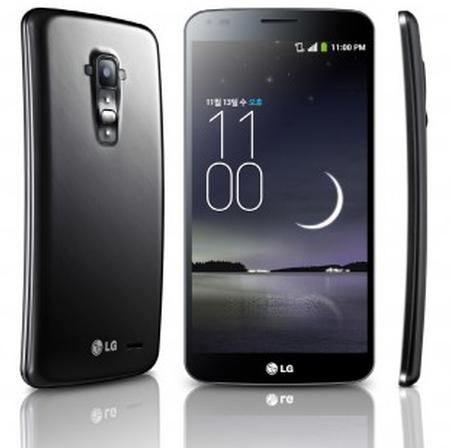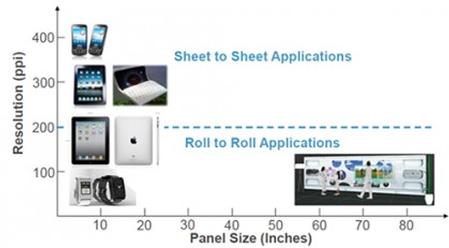Dr Harry Zervos, Senior Technology Analyst, IDTechEx
2014 has only just began and already discussions abound on how a "tipping point" has been reached in the field of printed and flexible electronics, a statement mostly backed by the significant interest and accompanying investment by LG and Samsung into the commercialisation of flexible displays. Fully flexible displays are still a few years away, but recently demonstrated devices on plastic substrates (but still encapsulated in rigid glass) by both Korean giants are the precursors of conformable ultra-thin OLEDs, which will be characterised by true flexibility and unsurpassed robustness.
In the same vein, Plastic Logic recently demonstrated a truly flexible, plastic, fully organic AMOLED display, developed in co-operation with Novaled. This was the first of a series of technology demonstrators during 2014, which will be part of each company's development of partnerships to enable the market for truly flexible, unbreakable AMOLED displays.
Unfortunately, encapsulation solutions are not quite there yet, which explains why the first displays on plastic substrates are still encapsulated in rigid glass. It also showcases the fact that "tipping points" do not happen simultaneously across the board for all technologies incorporated in a device. This is why there will be several generations of products in the next few years, until we see fully flexible form factors in consumer electronics. Taking the G Flex as an example of a first generation of a whole new type of device, other than the plastic display, it also carries a lot of other innovation that makes it stand out; a self-healing back cover, a curved battery that conforms to the shape of the platform, features that are already garnering praise.
Large form factors on their way
Larger form factor for electronics is on its way too, and manufacturing technologies will be changing further in order to accommodate it. Lithographic processes are ideal for smaller size displays (e.g. smartphone displays) with small pixel sizes but scaling up in order to accommodate larger displays is a challenge and will remain costly. In the case of larger panels, roll to roll processes have an advantage, given the fact that resolutions do not have to be so high and feature sizes do not need to be as small as in high-end smart phones.
Whether it's sheet to sheet or roll-to-roll when it comes to manufacturing technique for consumer electronics, the following graph from Applied Materials makes it all very clear: the balance between pixel density and panel size is really the deciding factor.
To understand tipping points as well as what's shaping the future of consumer electronics, IDTechEx is staging the 11th Printed Electronics Europe conference on the 1st and 2nd of April 2014, in Berlin, Germany, with presentations from companies such as Novaled, Applied Materials, Philips, OSRAM and many others. Innovation in materials, manufacturing and integration technology for electronics will take centre stage and as always, a major focus will be in the technology pull as expressed by adopters who make up an important part of the event.








